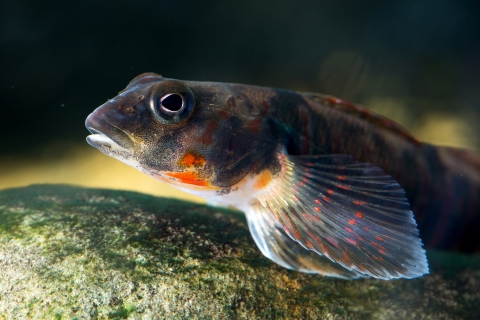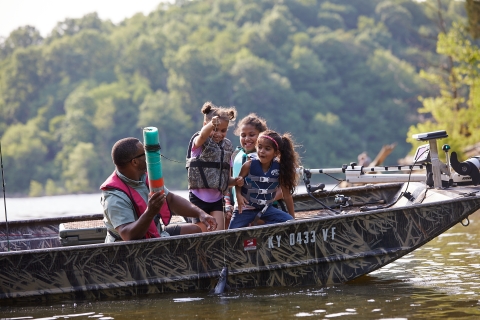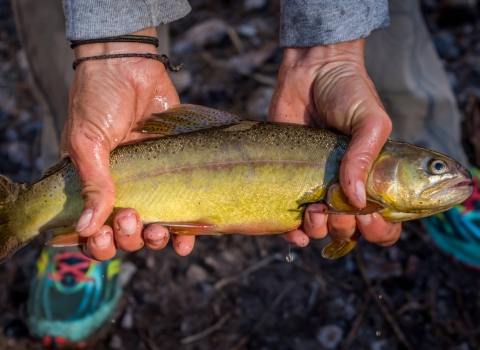June 10th, 2022, marked the 150th anniversary of the U.S. Fish and Wildlife Service’s National Fish Hatchery System! What’s the National Fish Hatchery System? We’re so glad you asked.
National Fish Hatchery System: 150 Years of Conservation
National fish hatcheries were some of the earliest federal conservation efforts in America. The National Fish Hatchery System was established by congress on June 10th, 1872. Originally, the hatchery system was created to raise food fish for commercial fisheries and to feed families. Over the years, the system has evolved to meet the changing needs of conservation. Today 71 national fish hatcheries across the country raise fish (and other aquatic species like frogs and mussels) to support conservation. Some national fish hatcheries still raise fish for food and to support commercial fishing, but others are now dedicated completely to raising at risk, threatened, or endangered species. National fish hatcheries restore and support wild populations of aquatic animals through responsible and effective conservation aquaculture and applied science.
National fish hatcheries raise fish (And a lot of other aquatic wildlife!)
Every year national fish hatcheries released more than 100 million fish to support conservation, recreation, and subsistence fisheries. National fish hatcheries raise big fish like the endangered pallid sturgeon and tiny fish like the colorful candy darter. They raise familiar fish, like salmon, and ancient species like paddlefish. They raise sunfish to help support mussel conservation, and walleye that help feed communities. If it’s fish, it’s the National Fish Hatchery System.
National fish hatcheries protect aquatic wildlife
The world’s rivers and lakes were once full of diverse communities of fish, invertebrates, and plants. Now, these aquatic wildlife are some of the most imperiled in the world because of habitat loss and fragmentation, invasive species invasive species
An invasive species is any plant or animal that has spread or been introduced into a new area where they are, or could, cause harm to the environment, economy, or human, animal, or plant health. Their unwelcome presence can destroy ecosystems and cost millions of dollars.
Learn more about invasive species , and climate change climate change
Climate change includes both global warming driven by human-induced emissions of greenhouse gases and the resulting large-scale shifts in weather patterns. Though there have been previous periods of climatic change, since the mid-20th century humans have had an unprecedented impact on Earth's climate system and caused change on a global scale.
Learn more about climate change .
National fish hatcheries help by :
- raising fish and other aquatic wildlife that are threatened or endangered.
- supporting fisheries that have been impacted by federal dams.
- improving recreational, subsistence, and commercial fishing.
Get the facts about national fish hatchery conservation.
National fish hatcheries make fishing better
Fishing is more than a hobby. For many, it represents a way of life, a connection to wildlife, and a sustainable way to support your family and community. Through fishing, you can connect with nature and the world around you. The National Fish Hatchery System is dedicated to ensuring healthy sustainable fisheries for future generations.









